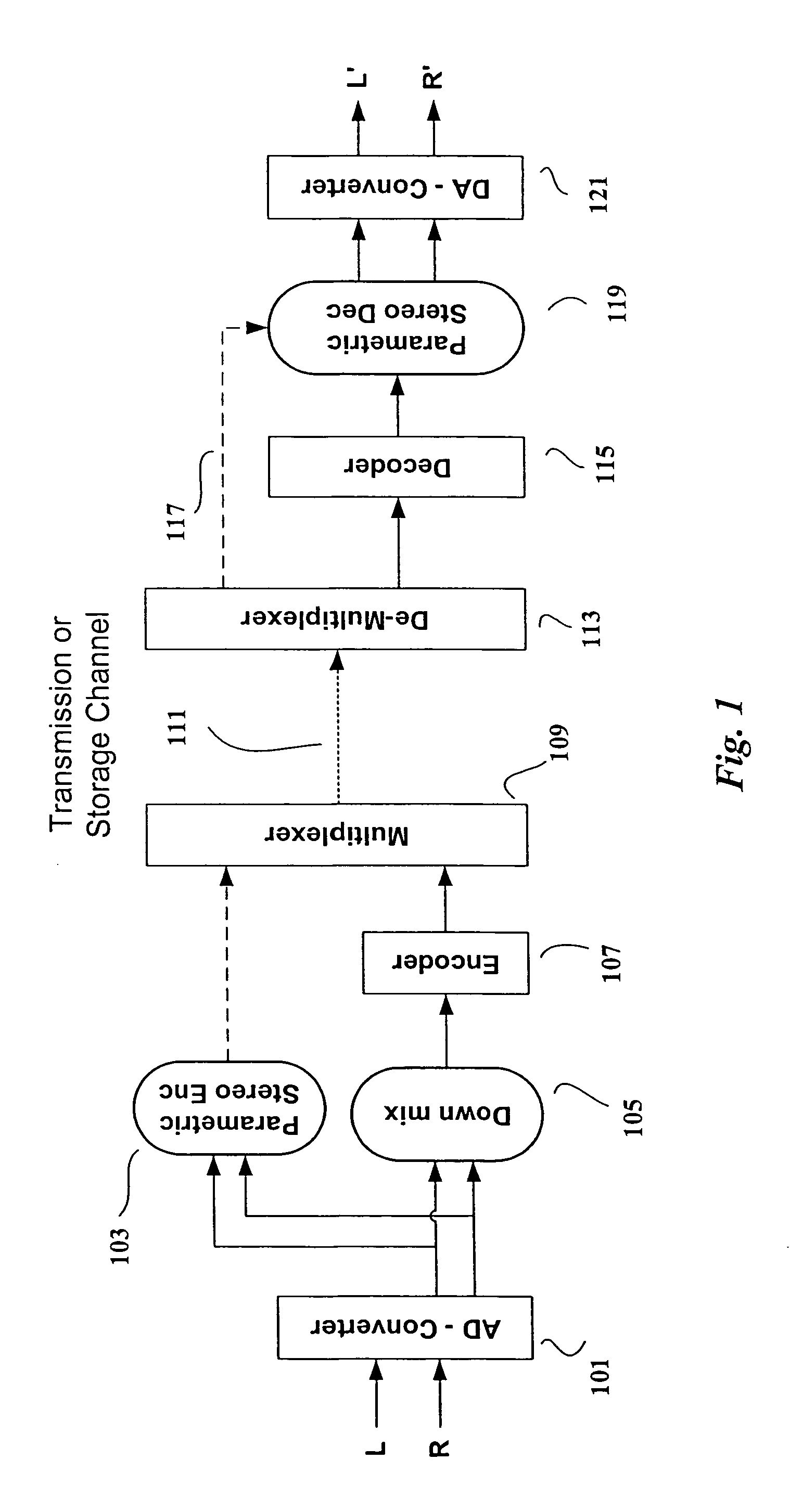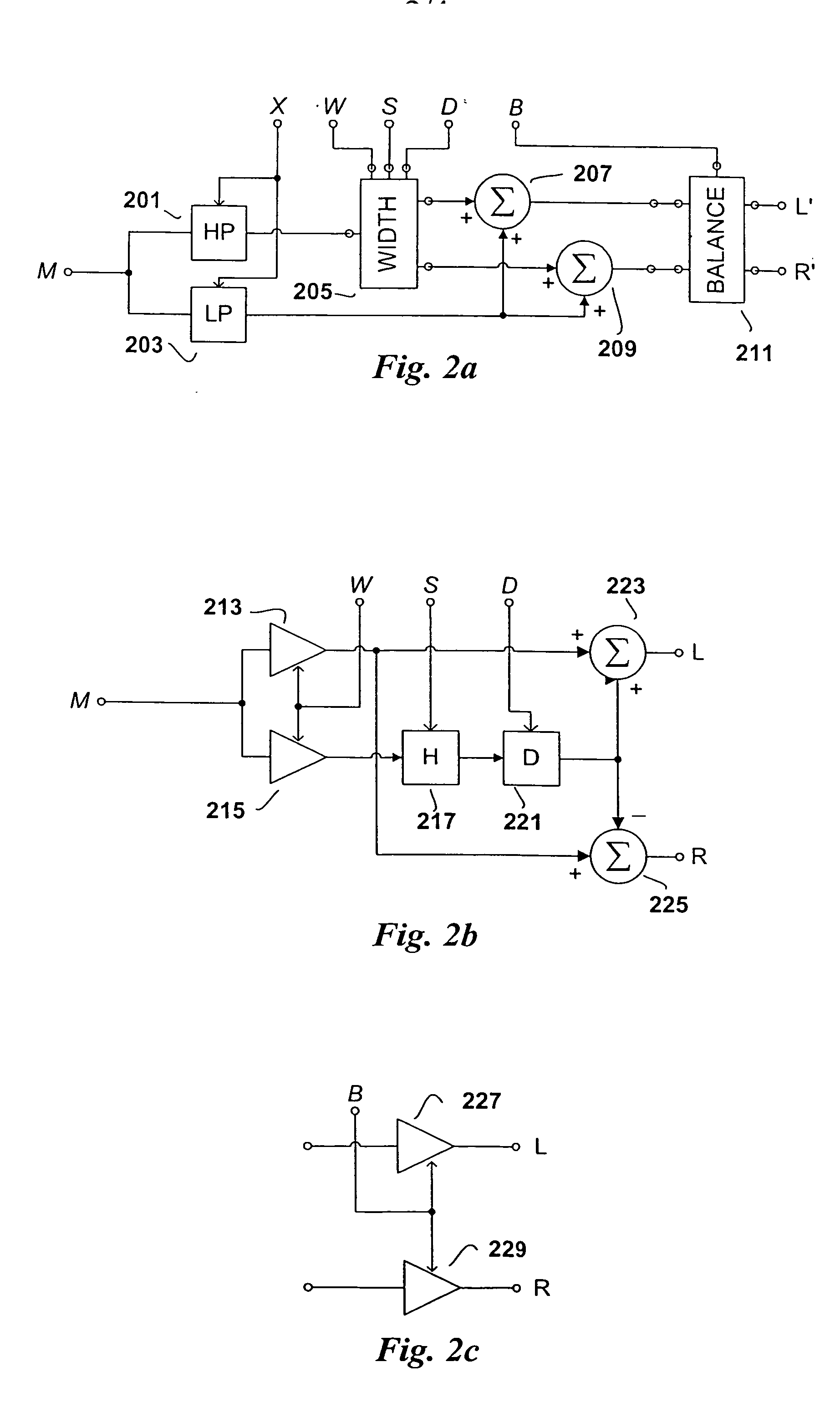Efficient and scalable parametric stereo coding for low bitrate applications
a parametric stereo and low bitrate technology, applied in pseudo-stereo systems, speech analysis, instruments, etc., can solve the problems of prior art systems falling short, unpleasant experiences, and unavoidable mono coding of audio program material, so as to reduce the risk of unmasking coding artifacts, efficient transmission, and low total bitrate demand
- Summary
- Abstract
- Description
- Claims
- Application Information
AI Technical Summary
Benefits of technology
Problems solved by technology
Method used
Image
Examples
Embodiment Construction
[0016] The below-described embodiments are merely illustrative for the principles of the present invention. It is understood that modifications and variations of the arrangements and the details described herein will be apparent to others skilled in the art. It is the intent therefore, to be limited only by the scope of the impending patent claims, and not by the specific details presented by way of description and explanation of the embodiments herein. For the sake of clarity, all below examples assume two channel systems, but apparent to others skilled in the art, the methods can be applied to multichannel systems, such as a 5.1 system.
[0017]FIG. 1 shows how an arbitrary source coding system comprising of an encoder, 107, and a decoder, 115, where encoder and decoder operate in monaural mode, can be enhanced by parametric stereo coding according to the invention. Let L and R denote the left and right analog input signals, which are fed to an AD-converter, 101. The output from the...
PUM
 Login to View More
Login to View More Abstract
Description
Claims
Application Information
 Login to View More
Login to View More - R&D
- Intellectual Property
- Life Sciences
- Materials
- Tech Scout
- Unparalleled Data Quality
- Higher Quality Content
- 60% Fewer Hallucinations
Browse by: Latest US Patents, China's latest patents, Technical Efficacy Thesaurus, Application Domain, Technology Topic, Popular Technical Reports.
© 2025 PatSnap. All rights reserved.Legal|Privacy policy|Modern Slavery Act Transparency Statement|Sitemap|About US| Contact US: help@patsnap.com



